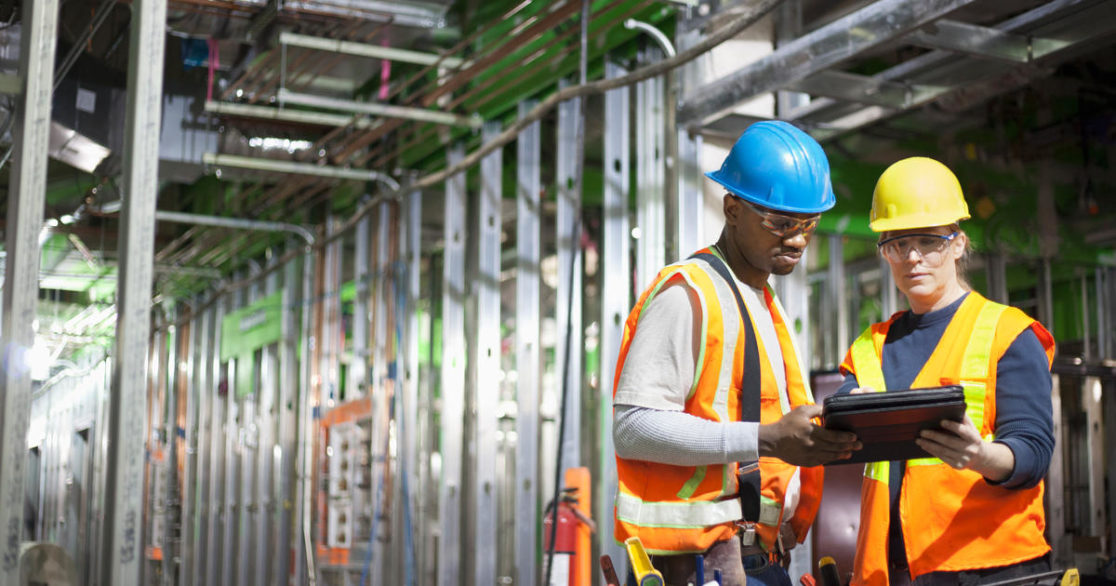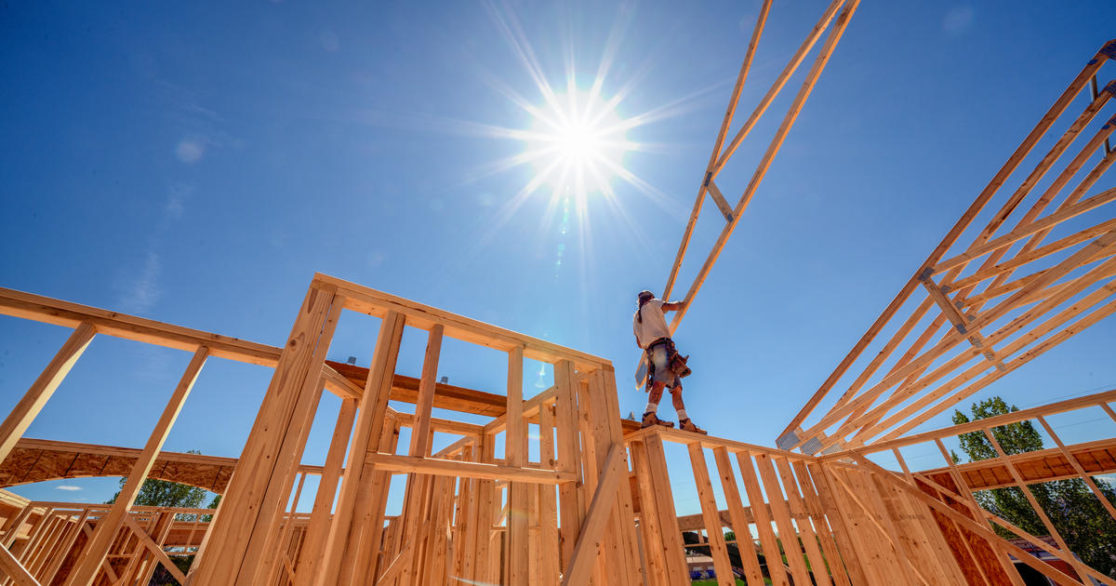2020 will see a continuation of 2019’s move towards digitalization of business processes with many organizations extending and refining their approaches.
Technologies such as Blockchain and the Internet of Things (IoT) will start to allow for a manufacturing and product-led approach to construction, allowing for greater safety and efficiencies to everyone’s benefit, with a focus on outsourcing construction of elements of buildings.
It is also notable that the industry is ripe for innovation that doesn’t appear to be happening in spite of other industries adopting it; it is therefore reasonable to forecast that other entrants will come into the business, potentially ousting apparently secure incumbents.

Prediction 1: The industry will continue to innovate and embrace digital technologies
First the good news: the productivity of construction companies is set to increase 20 percent between 2020 and 2025. Now the bad: this is only going to apply to businesses that embrace the new technologies that are becoming available, and then link them together.
For a lot of major players, this is going to look daunting. Tell a construction company they will need to use virtual reality and mobility in the planning and design stage, that procurement and manufacturing are going to involve 3D printing with an element of the IoT and building information modelling (BIM) and 4D scheduling, that construction and operations are going to bring robotics and drones to center stage and that maintenance will involve laser scanning. You’re likely to bring tears to their eyes – and not the joyful kind. But the most important thing to note is that this doesn’t all have to be done at once.
What are the 3 benefits for construction companies that measure #BusinessValue? https://t.co/CZTDLEIkBx
— IFS (@ifs) January 6, 2020
The whole process becomes visible
Essentially the digital model enables a business to monitor the whole of the process of construction. This includes BIM, drones (and construction uses more drones than any other sector, having grown 239 percent year on year, ahead of even mining which has increased by 198 percent) and a number of other streamlined processes, including offsite manufacturing. Last year IFS predicted a surge in the offsite manufacturing of a number of processes and we will examine this in our second prediction; this leads to a number of other changes, one of which is the standardization of materials and project processes. This, in turn, is going to lead to greater use of automation and robotics, according to a report in Wired; however, in spite of many people having seen this as a negative in several industries the option to send a robot to an unsafe place or to the highest altitudes has to be a benefit. Even leaving safety concerns aside, according to a 2017 study by the Associated General Contractors of America, 70 percent of contractors in that country struggle to hire skilled craft workers. Given that hiring needs in the industry will grow 12 percent by 2026, the option to duplicate human skills with automation is pretty positive.
What’s missing from a number of implementations IFS has seen is the right software environment to knit these elements together. A drone is a great thing as long as it’s able to report its findings to the manufacturing process easily and smoothly; scanning for damage using laser technology works only if the information is going somewhere and analytics are being applied to ascertain any underlying trends as well as repair the immediate issue.

Prediction 2: Offsite manufacturing will grow by 50 percent between 2020-2023
In the 1940s and 1950s in the UK, there arose a fashion for prefabricated homes, or “prefabs” as they were known. A necessity after war damage, they were notoriously flimsy and low-quality but many survived until the 1970s and did the job of housing people. The walls, roofs and other components were built offsite – hence “prefabricated” – and assembled onsite.
Delegating another business to build, say, a wall, isn’t something common to every culture and yet in many areas of Europe it’s exactly what people do, leading to a modular approach to construction. The quality of the build is uncompromised and the process is enhanced, subject to a lot of changes permitted to happen. This is why McKinsey believes modular construction can increase the speed of construction by as much as 50 percent with cost reductions, assuming the right environment and trade-offs, should fall by one fifth. The obstacle for the established incumbent is that existing business models will fail to take advantage of these new methods.
Offsite construction is a true game-changer. It increases productivity because things can happen concurrently when they would previously have been sequential. It offers clients a thru life model and it addresses the issue of an aging skilled workforce – if you have 1,000 sites that need a particular skill and 100 workers, that’s a problem. If you have 50 factories that can offer those skills then they can have two of those workers each.

The results have been striking. In China the mini Sky City was erected in 19 days. The modular approach works not only for residential properties but for infrastructure, government assets, mining, maritime and a great deal more. IFS is predicting that within five years 50 percent of all construction projects will use offsite and modular manufacturing or 3D printing, leading to a 40 percent drop in project delivery timescales and a 35 percent reduction in cost.
Existing business processes won’t deliver the benefits to remain competitive in these dynamic markets, however. To make this work, everything must be standardized. At the moment, architects aren’t used to ordering from a selection of walls or roofs; they design them individually. A manufacturing, component-led approach is the only way to make this new model work. All of the components must fit and the ability to fit them together must be a readily-available skill. Preferably an IoT application also makes the component parts easy to track.
If existing businesses don’t adopt this digitalized way of working, then they run the risk that new business will appear to take their place. The lack of intellectual property in the area means the only real obstacle to entry is financial, which is why flat-pack specialist Ikea has been able to set up a joint venture with Skanska and secure a contract to make 162 residences in the UK. In other words…
Prediction 3: The challengers are coming
Ikea is not the only non-construction specialist getting into the act. Last year IFS posited that Amazon might enter the construction market and it’s doing so, in the US, with prefabricated design company Plant Prefab. Logically the idea of having a smart home becomes much simpler if the cabling and other equipment that make smartness possible can be built in rather than added on later.
This is only one area of innovation; it looks likely that there is disruption on the way. There were many reasons UK construction company Carillion went bankrupt, but dated practices were among them. Deloitte has an excellent report on patterns of disruption as does Oliver Wyman. Both consider why the construction industry is particularly ripe for change, with factors including large capital projects that typically take 20 percent longer to complete than forecast and frequently end up 80 percent over budget.

Most of this budget overage is due to poor productivity and a great deal of this can be addressed by software suites that link all the processes together and monitor them as we discussed last year. The question is whether this sort of improvement is going to come from established industry giants or from outside it. McKinsey asked over 300 senior leaders in construction where they felt their next competition was coming from and 90 percent of respondents felt they would be encountering new competition at different levels of the value chain; 46 percent thought this new competition would be from the tech and software giants, 37 percent thought it would be from start-ups, 23 percent saw it coming from China and other emerging market players and only 19 percent thought current incumbents would be the biggest source of competition.
Offsite development will be the biggest game-changer and this is why we’re saying that to survive, construction companies must diversify – they need to be manufacturers as well as builders, they need their IT systems to be efficient enough to talk to each other and, perhaps most crucially, they need to become service companies to keep their maintenance running and their customers returning.
What’s going to be really telling is whether the next major business challenge comes from, say, Wimpey – or Amazon, or Ikea, or someone else completely unexpected. With research, like that from the which suggests that construction is lagging in tech adoption, it certainly looks as though something has to change if the incumbents are to protect themselves.
Finally—a simple guide for construction contractors writing an RFP for their #ERP software project! https://t.co/6gq04odmji#BuildForSuccess #ERP pic.twitter.com/bSOOuVL1Zx
— IFS (@ifs) January 7, 2020
To learn more check out this handy guide to writing an RFP for project and asset-centric businesses.
‘Do you have questions or comments?
We’d love to hear them so please leave us a message below.